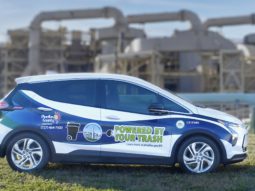Resiliency Program
The Resiliency Program, a division of the Office of Fleet and Asset Management, strives to make Pinellas County more resilient to current vulnerabilities and future conditions and to promote the wise use of resources through internal governmental practices and external community services.
Quick Facts
Resiliency, or resilience, is the ability to anticipate, prepare for, respond to, and recover from significant threats with minimum damage to society, the economy, and the surrounding environment, including physical infrastructure.
In short: The capacity to prepare and adapt.
The dollar value of resiliency depends on the specific context of the project, but some broad estimates are available. For example, a Pew Research Center study found that every $1 invested in disaster mitigation saves $6.
Accomplishments
This action plan will set the foundation for all of the County’s resiliency policies and initiatives.
The County developed a guidance tool to help ensure that Pinellas County buildings, roads, bridges and other infrastructure are resilient to the impacts of sea-level rise and flooding.


